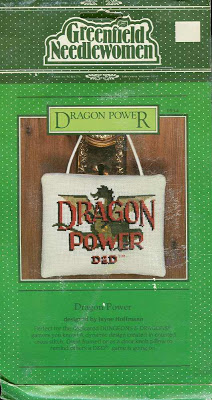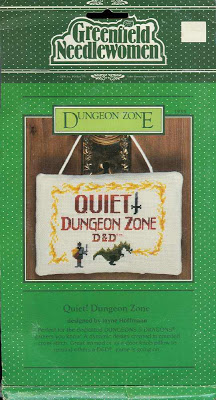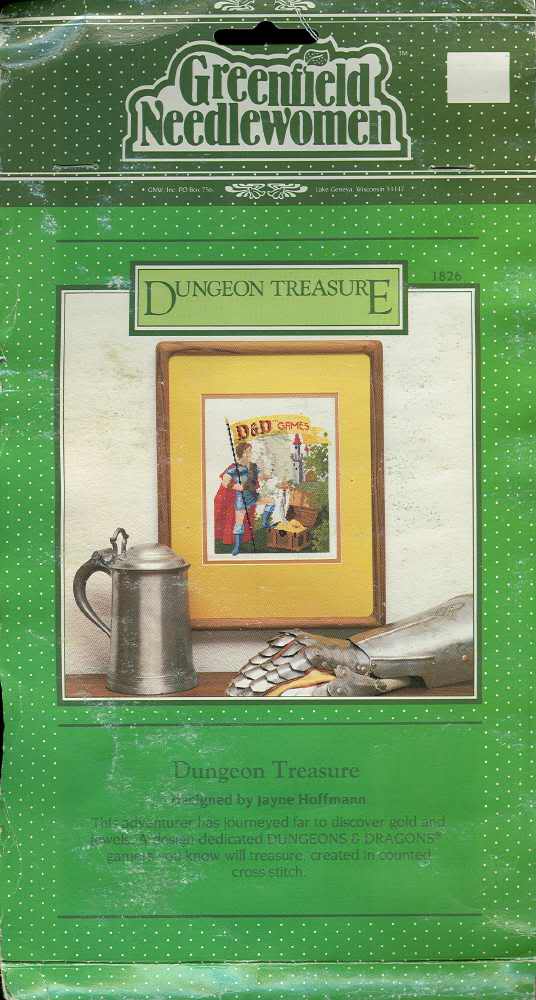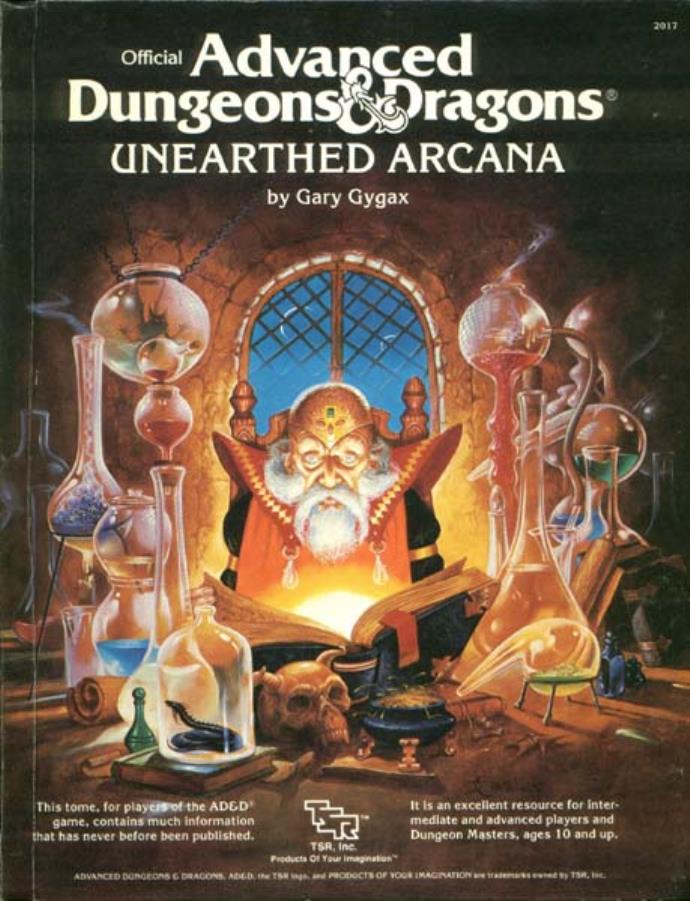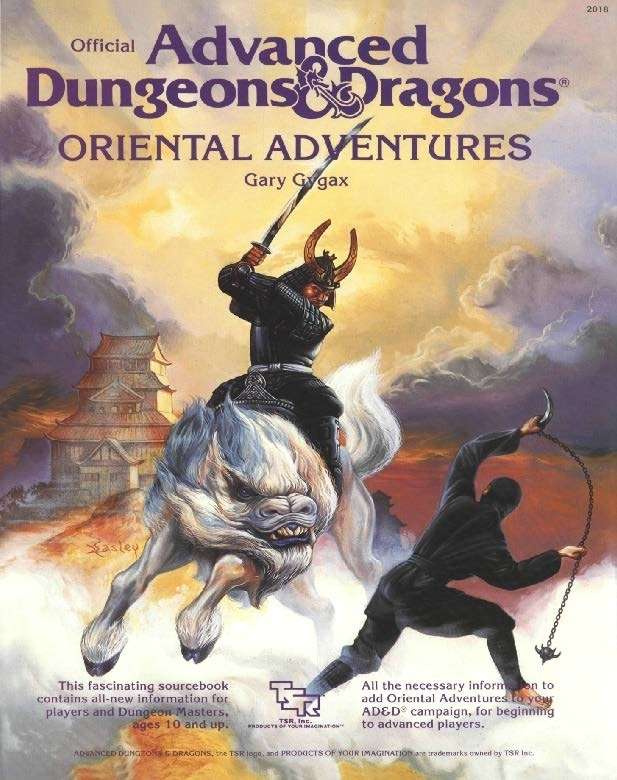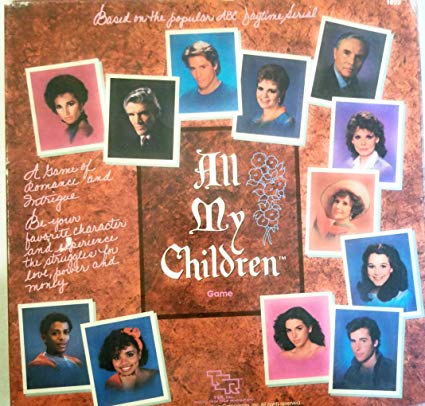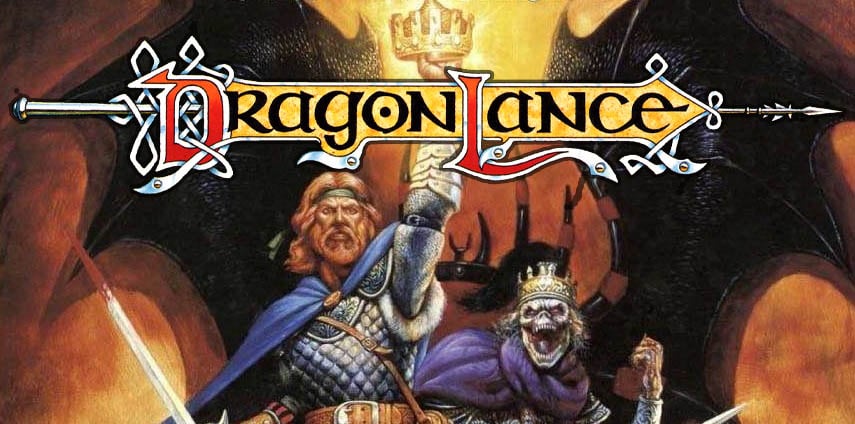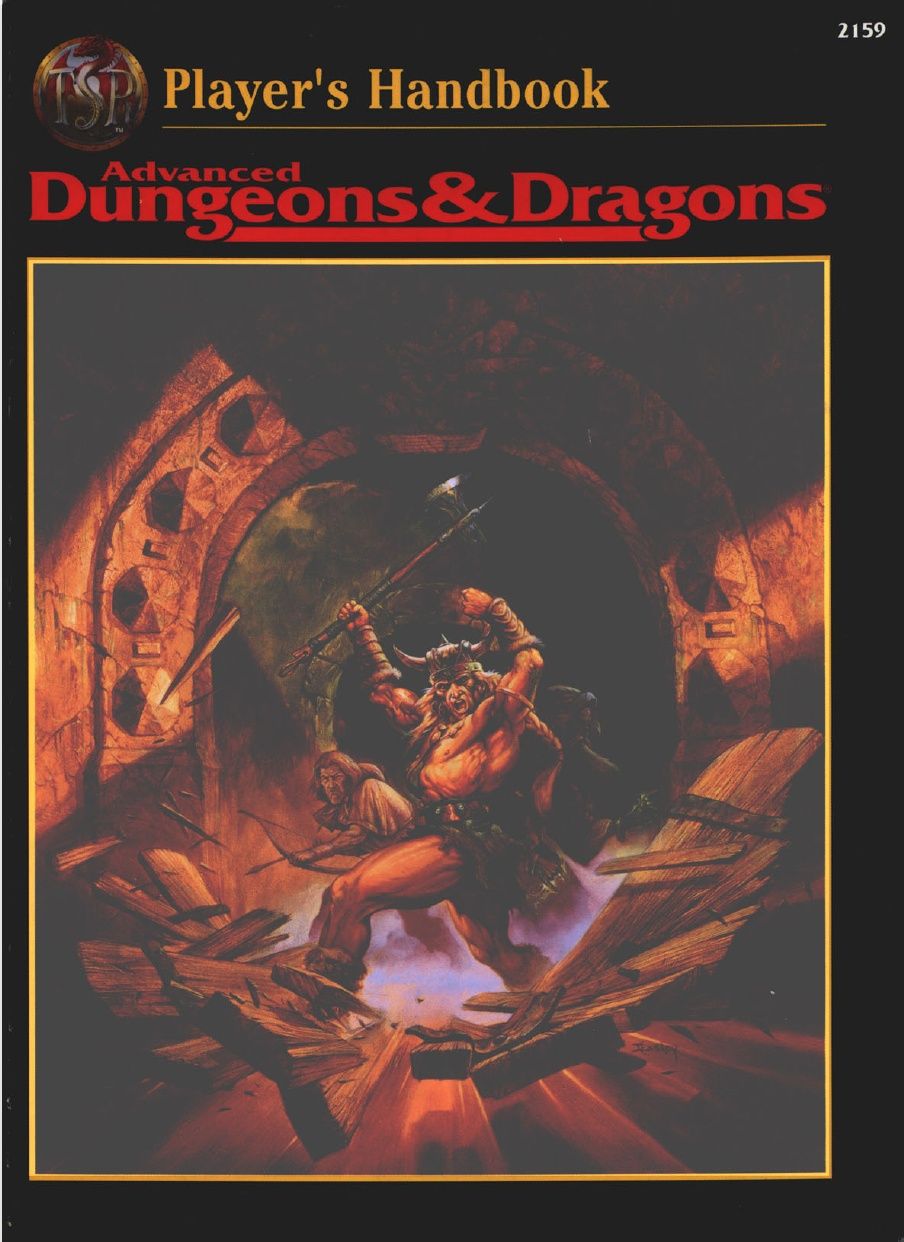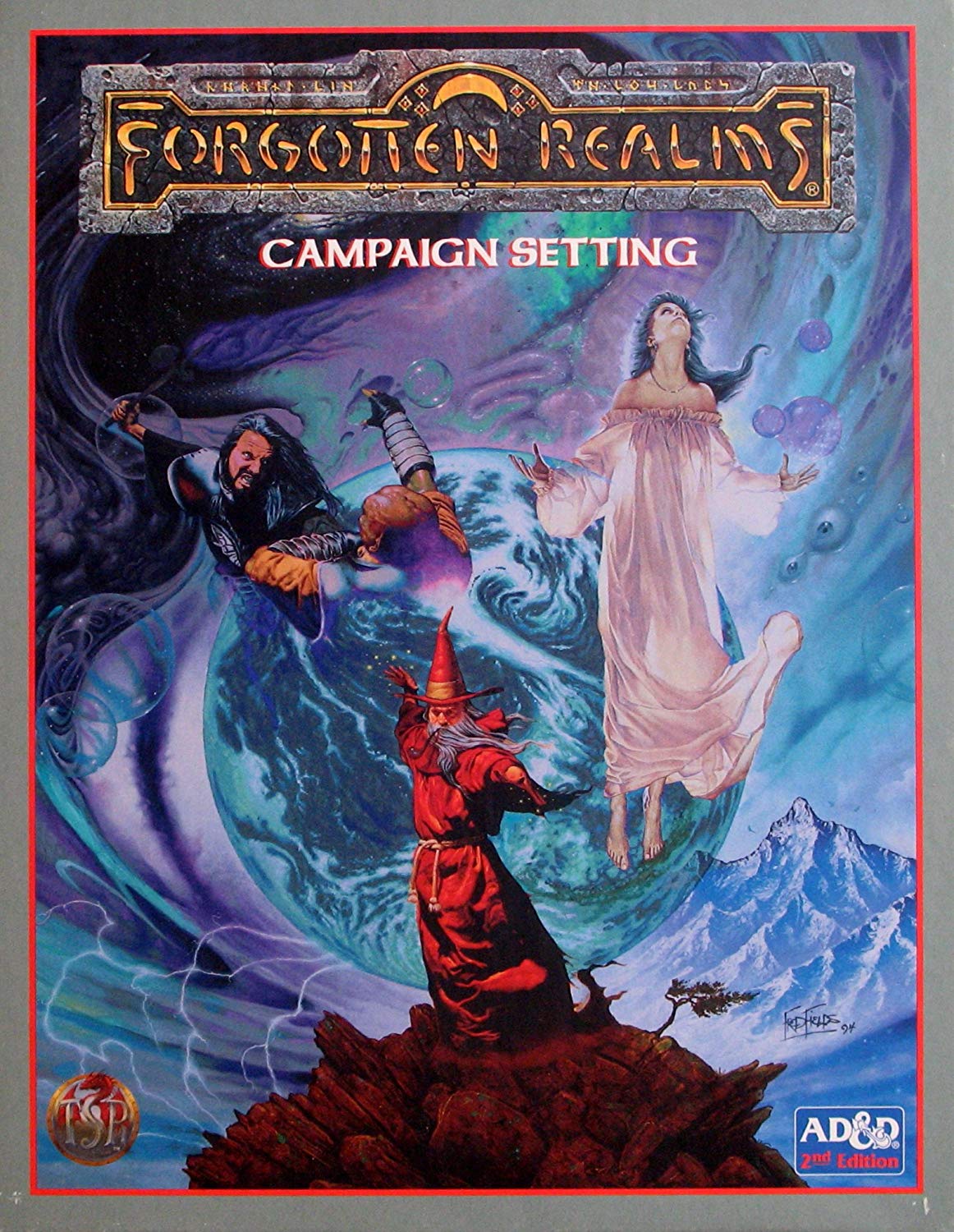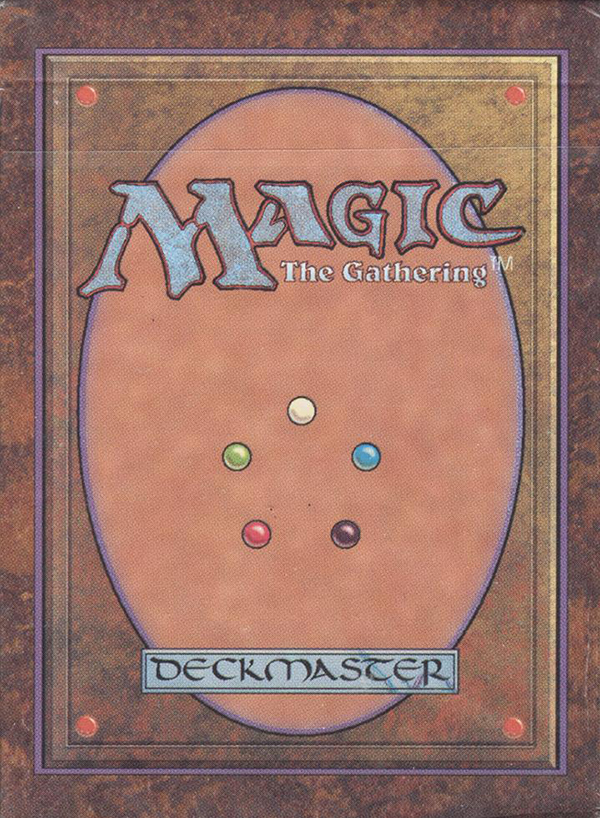D&D: The Death Of TSR – Prime
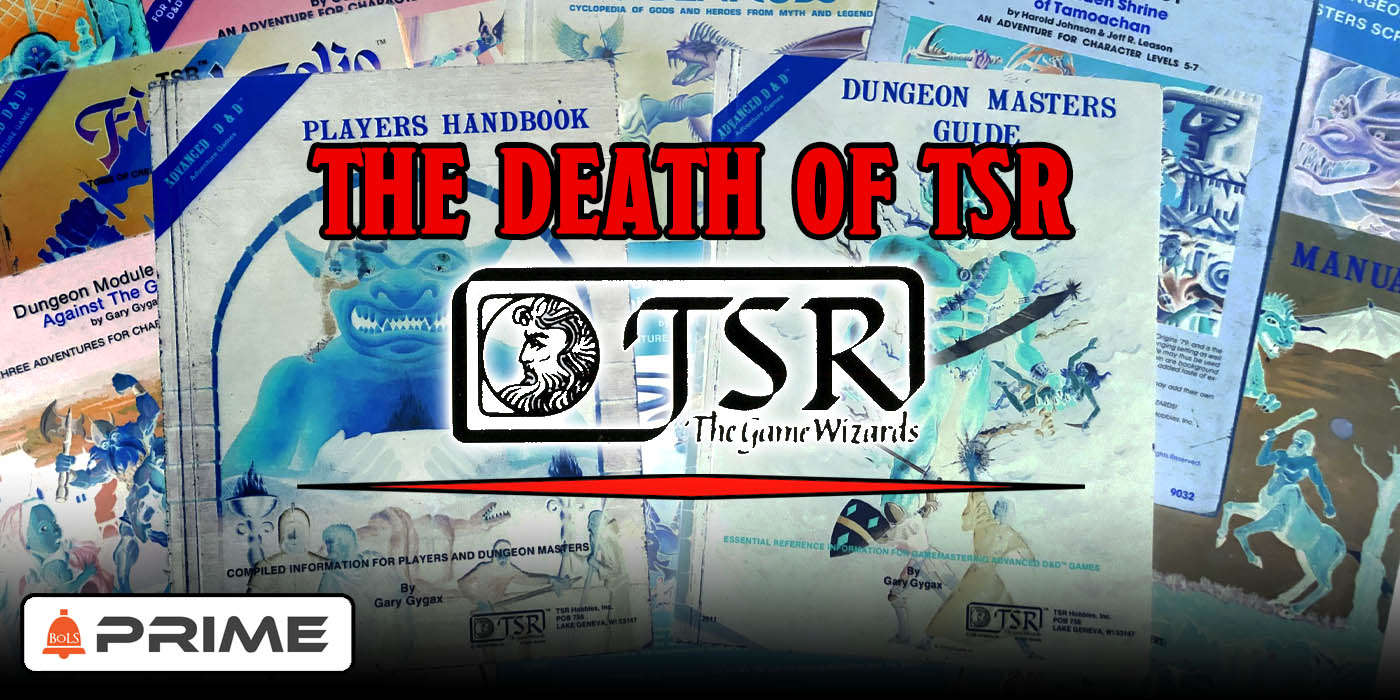
TSR ruled the tabletop gaming industry for almost 25 years. With Gygax gone, D&D blossomed… right up until it all came crashing down.
From its tumultuous start in the ’70s to the dawn of the third decade of the two-thousands, D&D has defined the tabletop roleplaying game genre. It’s the game that started it all, and in its wake, other games have flourished and offshoots have grown in wild ways. D&D itself has been through five different editions and has been owned by TSR (twice–it’s complicated) until it finally found its present home with Wizards of the Coast. But if one of the minds behind Magic: the Gathering hadn’t been a fan of D&D and the people creating the game at the time, we might not have D&D as we know it today.
How does the company that made the game with the most players, biggest audience, and widest reach fall apart? Today we’re taking a look at the history of TSR as it went from founder of the industry to fading glory. If you’re curious about the earliest days of TSR, during the heady 1970s when an audience, hungry for D&D and what it represented, first began to flourish, you can check out our earlier article on the Rise of TSR.
If you’re curious about the story about what happened to E. Gary Gygax, one of the two creators of D&D–and the one who wielded the most influence at TSR until he was ousted in 1985, you can check out our article on the Fall of Gygax.
A Changing of the Guard
When the curtain rises on 1986, TSR is still coming through the financial troubles left to it by the Blume brothers, who had made a number of questionable decisions in Gygax’s absence. This includes too-rapid growth (at one point TSR had purchased more than 70 automobiles and employed more than 150 employees in spite of continued failures to meet sales goals), overproduction of products that weren’t selling well, and the purchase of a needlecraft company, Greenfield Needlewomen, owned by Kevin Blume’s wife.
As a quick aside, this led to the production of four different D&D themed needlepoint kits, coming out decades ahead of their time. After all, D&D handicrafts make up a surprising percentage of related activities. There was a serious disconnect between the audience at the time and the company–this is a problem that will continue to haunt TSR throughout its existence. Without an idea of what their customers want, TSR develops in scattershot spurts of smash hits and flops.
Full Speed Ahead – But Without a Map
And in 1985 (the year Gygax is oustered) it’s visible in the sheer number of products the company was designing in the hopes that of finding a hit. Some of Gygax’s reforms before he was removed from the company included culling some of TSR’s slower lines like Boot Hill and Star Frontiers and Gangbusters, as well as the poorly received Indiana Jones and Conan RPGs. The publishing arm of the company, which had always been its own independent entity was brought completely into the fold. For all that though, 1985 was a grand year for TSR.
There are two big reasons for this. The first is the release of several major AD&D rulebooks. The very first Unearthed Arcana was printed in 1985, bringing a big expansion to AD&D. These are articles that contained rules from Gygax’ From the Sorcerer’s Scroll column in Dragon Magazine. With more than four years of content to pull from, Unearthed Arcana introduces a huge swath of ideas to D&D that felt as though they’d been a part of the game since its inception: the Barbarian, the revised Druid and Ranger, weapon specialization rules, subraces like Drow and everyone’s favorite easy to spell svfirf–sirvfnble–svirfblirfbin deep gnomes.
It’s worth pointing out that this book is notoriously overpowered, and as early as Dragon #103, which was published in November of ’85, TSR had started to release huge swaths of errata to try and bring the book in line. Despite fans protesting about the unbalanced rules, Unearthed Arcana was one of the most popular releases, but even the busted rules wouldn’t do as well as TSR’s best-selling title of the year: Oriental Adventures.
Now this book is not without its problems. A look at the back cover blurb reveals the prevailing attitude at the time:
“…The mysterious and exotic Orient, land of spices and warlords, has at last opened her gates to the West.”
For beginners of experts, players or DMs, this book holds all the information on oriental character classes, races, spells, magical items, weapons, fighting styles, and monsters. The world of samurai and ninja awaits!
And you might be thinking that it’s easy to sit here in our ivory tower in 2019 and look back at obvious cultural appropriation and talk about how harmful it is–and you’d be right. But the fact that this is the single bestselling book of the year for TSR–and this in the year when they produced a Marvel Superheroes RPG and an All My Children board game adaptation that sold almost 200,000 copies–serves to illustrate how far we’ve come. But questions of cultural appropriation and the harmful effects of Orientalism have been around since well before 1985. Even as early as 1978, critics were looking at a fascination with “the East” as a mythical “other” to be used with about as much subtlety, nuance, and understanding as you’d expect.
Oh did you think I was joking about the All My Children thing?
You can all relax though, we’re not here to talk about Oriental Adventure’s problems–or to tackle racism in gaming–that’s a whole other can of articles. But we would be remiss if we didn’t point out the harmful context of the book, which was otherwise incredibly well received. It was not only a commercial success but a critical one as well, as you can see in this glowing review from White Dwarf #74:
Oriental Adventures is still part of AD&D, but a game played by these rules is likely to be very different indeed.
The skill system that has been grafted into the rules is a sensible extension of the character rules, and should be extended to cover the whole system, not just this Eastern supplement, as it was needed to bring AD&D closer to what has become ‘state of the art’ over the last couple of years. Without changing character classes, the concept of ‘proficiency slots’ extends the idea of weapon proficiencies into more peaceful arts, and provides a simple, workable skill system. Once a character is proficient in a skill such as Noh Theatre, for example, it can be used automatically in most cases, but a die roll is needed in critical situations.
And if words like proficiencies and skill systems sound somewhat familiar, you’ve hit on the core contained in Oriental Adventures. Between the book and Unearthed Arcana are the seeds of AD&D 2nd Edition, which would be TSR’s blessing… and its curse. But for now let’s get back to the other reason that 1985 was such a good year for TSR:
Enter Dragonlance
The story of Dragonlance is an interesting one. There’s a myth that it grew out of a campaign that the creators were playing in, but the truth is much stranger. The iconic campaign world, originally dubbed “Project Overlord” comes about as the result of several disparate events.
- A 1983 marketing survey informs TSR that D&D is their best selling product, and many of their books feature dungeons, but almost none feature dragons, telling TSR to “Make more books about dragons”
- Tracy Hickman join TSR and get assigned to a team meant to develop a line of modules each featuring a different dragon
- A “conspiracy” of designers abandon the project and instead develop a game about dragonriders and when TSR wants books and posters and calendars, a young editor, Margaret Weis, is assigned to the team
And the rest is history. Throughout 1984 and 85, the campaign morphs into a 12-adventure epic that takes place in three sets of four modules each, again centering around the various colors of dragons. But these adventures are meant to tell a single overarching story told in the Land of Krynn. The adventure’s success–and the promise of more Dragonlance media to come–ushers in the books Dragons of Autumn Twilight, Dragons of Winter Night, and Dragons of Spring Dawning which, by the close of ’85 would see the Dragonlance Chronicle cement the campaign setting in the hearts of players throughout the world.
These successes set the stage for TSR turning the corner on its financial difficulties. And in the books themselves are the seeds of things to come. In the last few releases, the groundwork was laid for 2nd Edition. By the time Gygax leaves and 1986 dawns, TSR has gone from reporting a loss of $3.8 million dollars to reporting $2 million dollars in profits. And a lot of this can be attributed to Lorraine Williams’ early work at TSR. As the story goes, Williams never once played D&D, but helped lead the company through 2nd Edition:
When she first started at the company, she made a series of announcements which, while rather impolitic, at least had the virtue of being bold. Bill Slaviscek described Williams’ product strategy this way: “The company wasn’t afraid to try new things, and when something was working, they jumped on it and tried to make it bigger.” Under Williams’ reign, the company launched dozens of new products, starting with the 2nd Edition of Advanced Dungeons & Dragons.
The 2nd Edition of AD&D was touted as the most accessible version of the game that had ever been produced. Rules were cleaned up, and bizarre inconsistencies that had plagued the game since the days of Gygax and Arneson were finally resolved, much to the satisfaction of many players who found the new rule set easier to comprehend.
Looking for that Next Hit
Not to say those early years were not without their troubles. With the last of Gygax’s works publishing in ’86, more than a few things would leave TSR’s fold. With the departure of Gygax, the original plans Greyhawk would stall out, and many of the TSR old guards would start to leave. During 86-87, Dave Arneson, the other creator of D&D, has a limited run of Blackmoor, then departs. The original editor of Dragon departs. And TSR finds itself in the position of being a game without a core world.
The success of Oriental Adventures and Dragonlance illustrate how successful a good campaign setting can be (a lesson learned from their dalliance with Empire of the Petal Throne as well), and without Greyhawk to build from–and with Weis and Hickman and Gygax gone– the company finds itself in need of a new setting.
Enter Ed Greenwood and the Forgotten Realms. This marks the creation of a new kind of campaign world, and a new era for TSR, who had a big hit on their hands with the success of Dragonlance, but no idea of how long it could last. Wanting to be ready when the audience would start looking for whatever was coming next, they approached Ed Greenwood who had been running articles in Dragon that showed off hints of a larger world. A world rich in history and detail and ripe for the publishing.
“So I called Ed,” [Jeff] Grubb recalls. “I asked him if he had more written about this setting, or if he was making it up as the articles went along.”
When Greenwood said that he had a significant amount of material prepared for the game world, Grubb asked if he would be interested in selling the setting to TSR.
“Well,” Greenwood reportedly answered, “I figured that since it’s being published in Dragon, you guys just owned it already.”
Grubb paused for a moment. “I’m not going to tell anyone you just said that. Let me see what sort of deal we can work out.”
And with that, TSR bought the Forgotten Realms from Ed Greenwood (reportedly). And in 1987, the first Campaign Setting boxed set is published. If you haven’t read through the box set, this is one of the most exhaustively detailed settings in all of D&D. Beyond the campaign setting box came a whole line of books, starting with Waterdeep and the North and running through the various countries of Faerun. Not to mention Volo’s Guide, which featured the chronicles of Volothamp Geddarm.
For all the criticism leveled at the Forgotten Realms: that it’s bland, generic, cookie-cutter fantasy, it does exactly what TSR wants it to do. It grows into a big enough world with enough detail to support any kind of fantasy. High adventure? Check out the cities of Baldur’s Gate and Waterdeep. Looking for mystic Tolkien-style Elven shenanigans? Boy have we got an island for you. Prefer to romp around in the Shire? Hey, there’s the Dalelands. And Kara-Tur would get folded into the Forgotten Realms, along with later setting elements of Mystara and Al-Qadim.
It’s during this time that a lot of the things that people think of as D&D come to pass. If you have a favorite, weird setting, odds are good it came about under the auspices of 2nd Edition and the Williams years at TSR. In 1989, when AD&D 2nd Edition launches, there’s a birth of new creativity. Things like non-weapon proficiencies are a part of the core game, and the schools of magic are split up into the nine we know today.
Market Saturation
As a result of the satanic panic, the demons and devils are renamed to tanar’ri and baatezu. Players can also find more rules for building forts and establishing followers. But more than anything else, 2nd Edition launched the settings that you’re probably nostalgic for. Dark Sun, Al-Qadim, Planescape, Birthright, Spelljammer–these are just a taste of the settings that D&D developed. If you wanted the gothic horror of Ravenloft, it got the full campaign setting treatment here–some claim as a response to White Wolf’s new Vampire: the Masquerade.
But all of the settings, while they would develop a lot of initial success for the company, carrying it out of the 80s and into the early 90s with a full head of steam, it also meant that D&D became a more divided product, without much of community identity. As Bill Slavicsek, the game designer who’s probably worked on that RPG thing you love, puts it in an interview:
I started doing freelance work for TSR in 1990,” Slavicsek said, “and I joined full time in 1993 to work as a designer and editor in the Dark Sun/Ravenloft group. By the time I got there, TSR was a compete mess.” According to Slavicsek, TSR was extremely deficient in market research, and while it was very focused on individual line sales, it never bothered to look at the big picture of what its strategy was doing to the market.
“Picture it this way,” Slavicsek says, “it’s raining money outside and you want to catch as much of it as you can. You can either make a really big bucket or waste your time and attention by creating a lot really small buckets — either way, you’re never going to make more rain.” In plain English, TSR, by putting out a lot of product lines instead of supporting the main Dungeons & Dragons line, fragmented the marketplace. The same audience was giving the same amount of money to TSR every year, which had taken on the additional financial burden of creating, producing, and supporting hundreds of products. It needed to grow the marketplace, and these brand extensions weren’t doing that.
This effect could be felt in the player base. The new settings all had their own take on the core rule sets and philosophy of the games. The initial philosophy of 2nd Edition: that all the player information should be contained in the PHB and all the dungeon master info in the DMG with as little overlap as possible gets diluted with all the campaign setting releases. You could go from needing a few simple core products to run the game, to needing a whole shelf just to create a character.
You can see how Wizards of the Coast has learned from their lessons, though it took some wrangling. Even Eberron, when it was first picked up in 3rd Edition had to be tuned so that it could be run without throwing out the core rules of D&D. Otherwise, you get players who play Planescape or Dark Sun instead of D&D.
Enter the 90s, and Magic the Gathering
And as the 90s hit, and hit hard, another big shift happens. Where TSR had had the luxury of not only ruling the roost but creating it, by now other major players were stepping up. White Wolf and West End Games were finding their own niche, but the biggest challenge to the D&D market would come in 1993. It would mean its end, and it would also be D&D’s ultimate savior.
Magic the Gathering. Launched in 1993 with the fledgling company Wizards of the Coast, founded in 1990 by an employee of Boeing, Peter Adkison, the company made RPGs to little success until Richard Garfield comes along with a new card game called Magic: the Gathering. And it is popular.
The same way that D&D is popular but moreso. The game caught TSR completely off guard. They at first tried to crush the game, with a CCG of their own, called Spellfire, then tried their hand at Dragon Dice a collectible dice game. Neither could even hold a candle to it. It didn’t help that the company was burning whatever goodwill it had rapidly.
The End of the Line
With the 90s came the internet, and TSR gained something of a litigious reputation for seeking out and shutting down fan sites as well as competitors. A Gygax created game, Dangerous Journeys, saw a costly lawsuit rise up when TSR sued its former president for copyright infringement. The case was ultimately settled, but it’s just one example of TSR’s financial burdens that would plague it all the way to 1996. In the end, as the RPG industry shrunk and distributors were adapting to a changing market, TSR was left in deep debt with seemingly no way out.
As Ryan Dancey, one of the minds behind the OGL put it:
In all my research into TSR’s business, across all the ledgers, notebooks, computer files, and other sources of data, there was one thing I never found — one gaping hole in the mass of data we had available.
No customer profiling information. No feedback. No surveys. No ‘voice of the customer.’ TSR, it seems, knew nothing about the people who kept it alive. he management of the company made decisions based on instinct and gut feelings; not data. They didn’t know how to listen – as an institution, listening to customers was considered something that other companies had to do – TSR led, everyone else followed.
I know now what killed TSR. It wasn’t trading card games. It wasn’t Dragon Dice. It wasn’t the success of other companies. It was a near total inability to listen to its customers, hear what they were saying, and make changes to make those customers happy. TSR died because it was deaf.
But as TSR sputtered, there was still one last ember of hope. Pete Adkison, the same founder of Wizards of the Coast admired the people at TSR. Ironically the success of the CCG market had given Wizards the clout and capital they needed to purchase TSR. And on April 10, 1997, they did exactly that.
The rest, as they say, is history.

